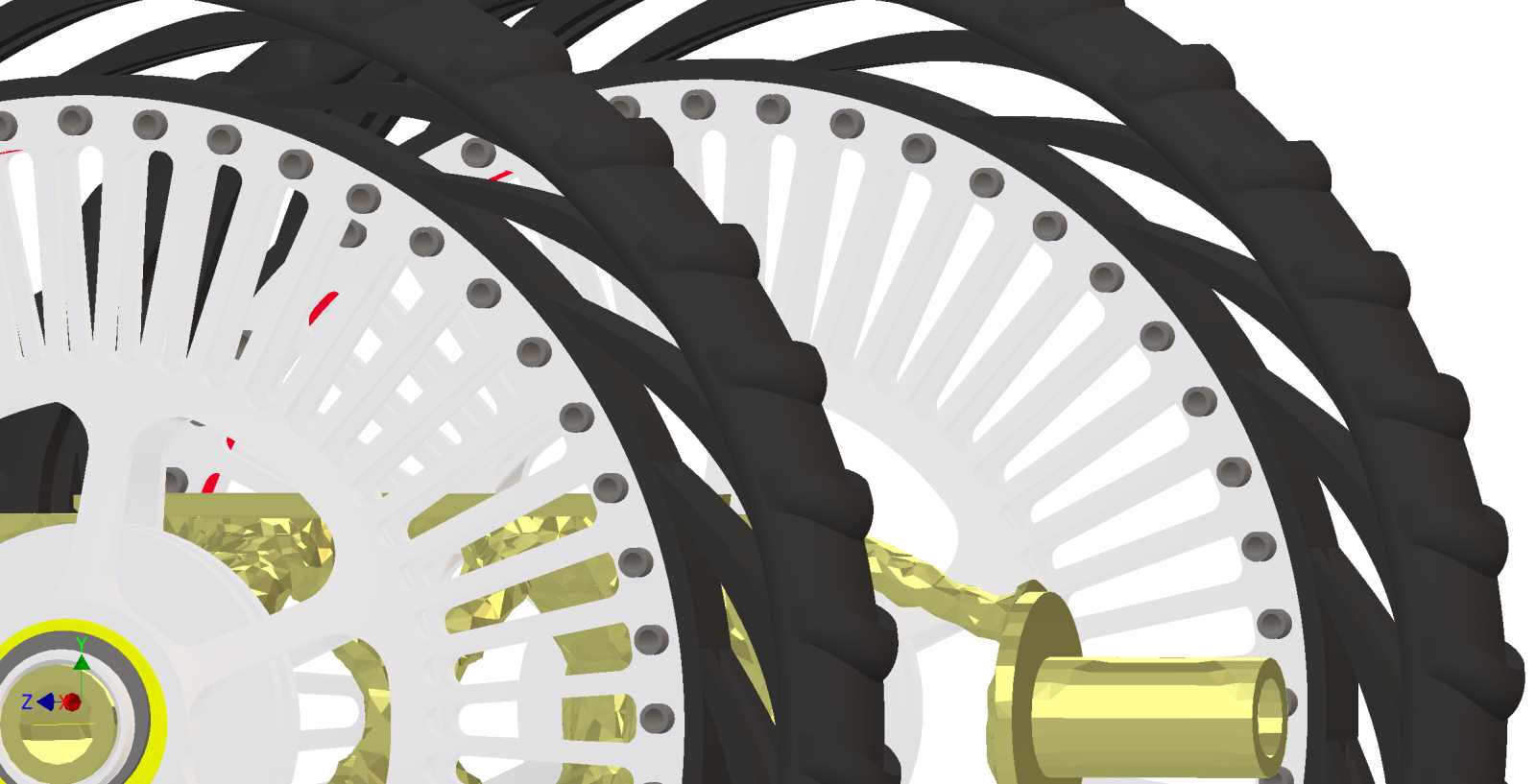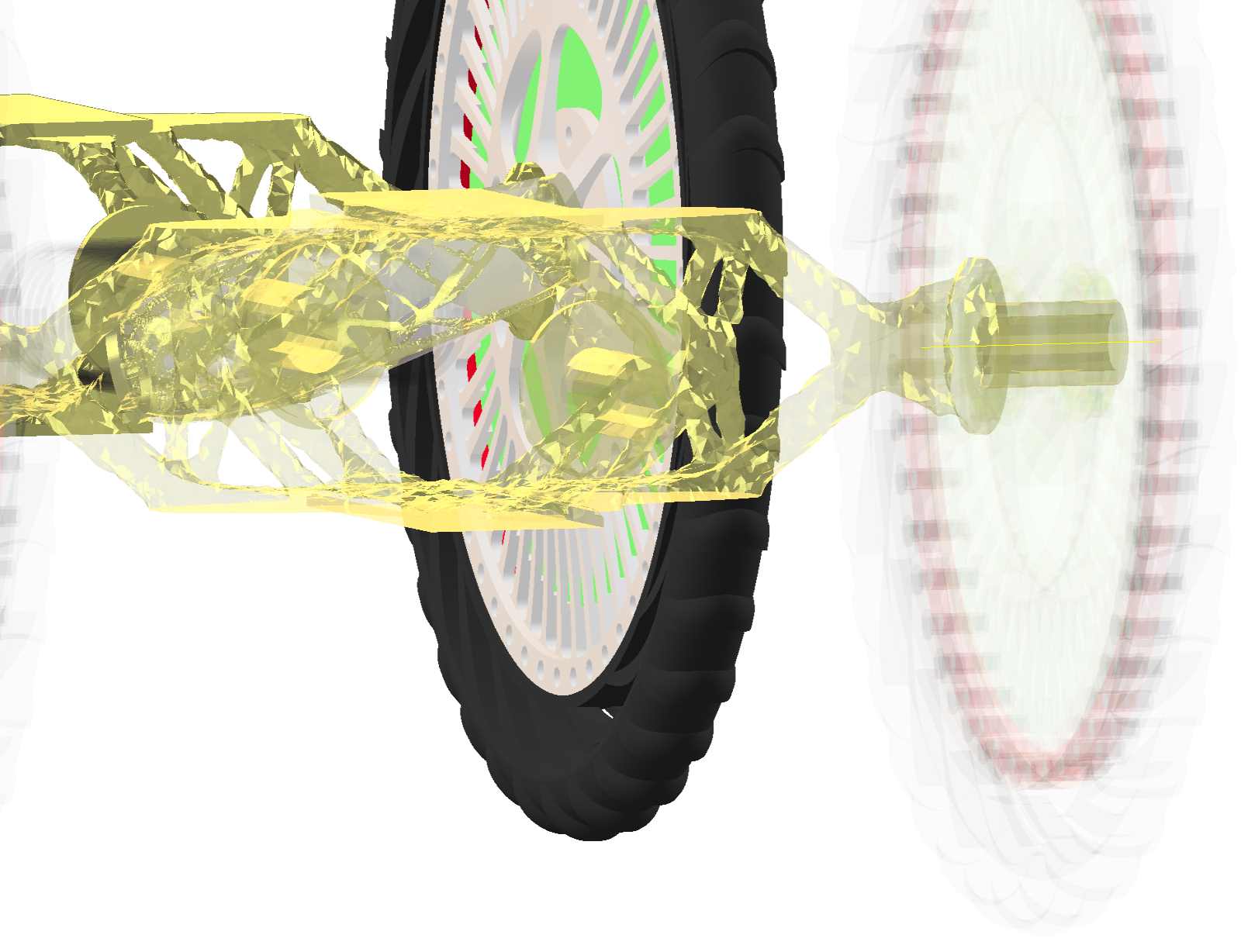Mars Mobile - An Electric Vehicle Application for Mars
Mars Mobile is a concept vehicle we work on, as a showcase platform for our electric motor applications in space exploration.
Share this on:
Very thin atmosphere, wide and very low-temperature range, and very low atmospheric pressure on Mars, makes it very difficult to work with pneumatic and hydraulic systems. Especially because the system will be produced (and also used) on the Earth and sent to Mars. This is great news for turncircles to prove its electric motor capabilities.
Through this concept, we investigate:
- Regenerative design applicability
- In-wheel application adaptation
That will later be integrated to our AF24PM-S ultra light custom axial flux DC electric motor.

Development Notes
Mars Mobile is thought to be an interplanetary vehicle that can be operated both on Earth and on Mars. Meaning that the parameters used in the development are driven both from Martian and Terran conditions. For example, the vehicle shall be strong enough to safely carry its load on Earth's 9.80m/s2 gravity whereas still provide good grip and traction on Mars' 3.71m/s2 gravity to be able to safely operate on Mars.
Like the gravity, many other parameters at two different operation locations (Mars and Earth) need to be taken into consideration.
NASA presents a very detailed Earth vs. Mars comparison on their website: "All About Mars" . ESA as well provide in-depth knowledge on Mars: Mars Express.
We refer to below key environmental parameters from NASA and ESA:
| Parameter | EARTH | MARS | Developer Notes |
|---|---|---|---|
| Average Distance from Sun | 93 million miles | 142 million miles | The amount of sunlight and therefore photons will be much less than on Earth. |
| Tilt of Axis | 23.5 degrees | 25 degrees | Seasonal changes will also occur on Mars |
| Length of Year | 365.25 Days | 687 Earth Days | Seasons will take (~2 times) longer than on Earth |
| Length of Day | 23 hours 56 minutes | 24 hours 37 minutes | Similar Day&Night duration will probably produce similar temperature change at scale |
| Gravity | 9.80m/s2 | 3.71m/s2 | The total weight of the Mars Mobile is limited by the launch capabilities on Earth |
| Temperature | [ -88°C to +58°C ] Average 14°C | [ -140°C to +30°C ] Average -63°C | Cold environment is very good for the conductors and the magnets of the electric motors as it will eventually keep the electric motor efficiency continuously high. |
| Atmosphere | 78% nitrogen, 21%oxygen, 1% others | 96% carbon dioxide, 2%argon, 2% nitrogen, 1%others | The atmospheric composition on Mars provides a good anti-corrosion effect for the metal parts. No oxidant gases are available, so no combustion possible. |
| Average surface pressure | 101,325 Pa (14.696 psi) | 610 Pa (0.088 psi) | Very thin atmosphere. The "air" plays a very important role in cooling the electric motors |
Regenerative Design
Regenerative design is one great way to put machine algorithms at work in exploring lighter design solutions and save weight. In addition to saved weight, it also allows working with conventional materials and production methods which are inexpensively available.
Considering the Mars Mobile case, a design note is to close the electric motor housing to protect the stator, as well as the electric motor as a whole from the sand storms. Though, closing the housing will require more material. More material mean more weight. So, here we can well take advantage of regenerative design and close the housing without increasing the weight; or else, if unavoidable, then ensure very less impact on weight.

Mars-Mobile is a work in progress. As the concept advances, we will share the news here in this article. Stay tuned!
If you have any questions, feel free to contact us.
